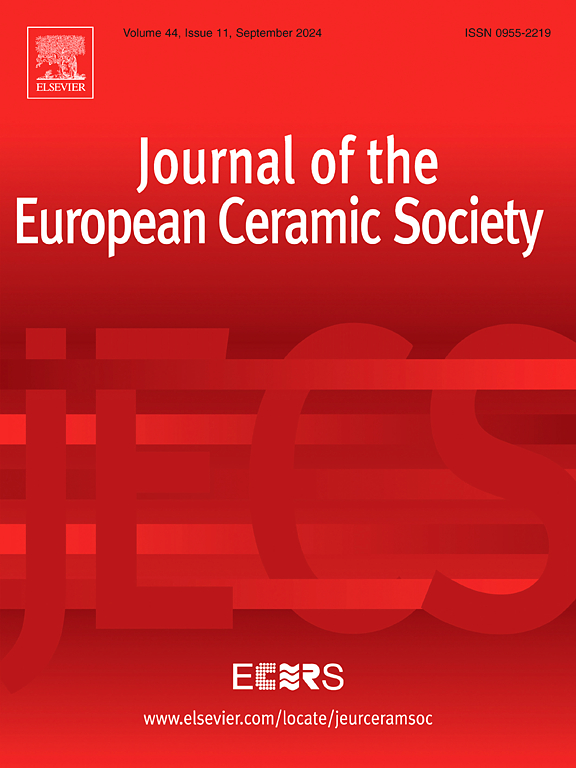A new interpretation on the recipe and technological origin of 14–18th century Chinese copper red paint
IF 5.8
2区 材料科学
Q1 MATERIALS SCIENCE, CERAMICS
Journal of The European Ceramic Society
Pub Date : 2025-05-21
DOI:10.1016/j.jeurceramsoc.2025.117535
引用次数: 0
Abstract
Despite the survival of sophisticated technique of underglaze copper red porcelain in contemporary China, the historical recipe for this paint from the Yuan to Qing dynasty (14–18th century) remains unknown. In this study, analytical methods such as scanning electron microscopy with energy dispersive spectroscopy (SEM-EDS), electron probe microanalysis with wavelength dispersive X-ray spectroscopy (EPMA-WDS), and laser ablation inductively coupled plasma mass spectrometry (LA-ICP-MS) were used to examine twenty-seven underglaze copper red and partial copper red glaze samples. The detection of Cu-S and Cu-As phases in microscale particles in the red colour areas reveals that cupric oxide and realgar were the primary raw materials. The use of realgar and other pertinent evidence indicate that the development of underglaze copper red in the Yuan dynasty was influenced by Islamic ceramic. This research provides insights into the technological origins and historical recipe of the underglaze copper red porcelain and highlights potential technological links between Chinese and West Asian ceramics during the Yuan dynasty.
对14 - 18世纪中国铜红漆配方及工艺来源的新解读
尽管釉下铜红瓷的精湛工艺在当代中国得以保存,但这种颜料从元到清(14 - 18世纪)的历史配方仍然未知。采用扫描电镜能谱(SEM-EDS)、电子探针微分析(EPMA-WDS)和激光烧蚀电感耦合等离子体质谱(LA-ICP-MS)等分析方法对27份釉下铜红和部分铜红釉样品进行了分析。红色区域微尺度颗粒中Cu-S和Cu-As相的检测表明,氧化铜和雄黄是主要原料。雄黄的使用等相关证据表明,元代釉下铜红的发展受到了伊斯兰陶艺的影响。本研究提供了对釉下铜红瓷的技术起源和历史配方的见解,并突出了元代中国和西亚陶瓷之间潜在的技术联系。
本文章由计算机程序翻译,如有差异,请以英文原文为准。
求助全文
约1分钟内获得全文
求助全文
来源期刊

Journal of The European Ceramic Society
工程技术-材料科学:硅酸盐
CiteScore
10.70
自引率
12.30%
发文量
863
审稿时长
35 days
期刊介绍:
The Journal of the European Ceramic Society publishes the results of original research and reviews relating to ceramic materials. Papers of either an experimental or theoretical character will be welcomed on a fully international basis. The emphasis is on novel generic science concerning the relationships between processing, microstructure and properties of polycrystalline ceramics consolidated at high temperature. Papers may relate to any of the conventional categories of ceramic: structural, functional, traditional or composite. The central objective is to sustain a high standard of research quality by means of appropriate reviewing procedures.
 求助内容:
求助内容: 应助结果提醒方式:
应助结果提醒方式:


